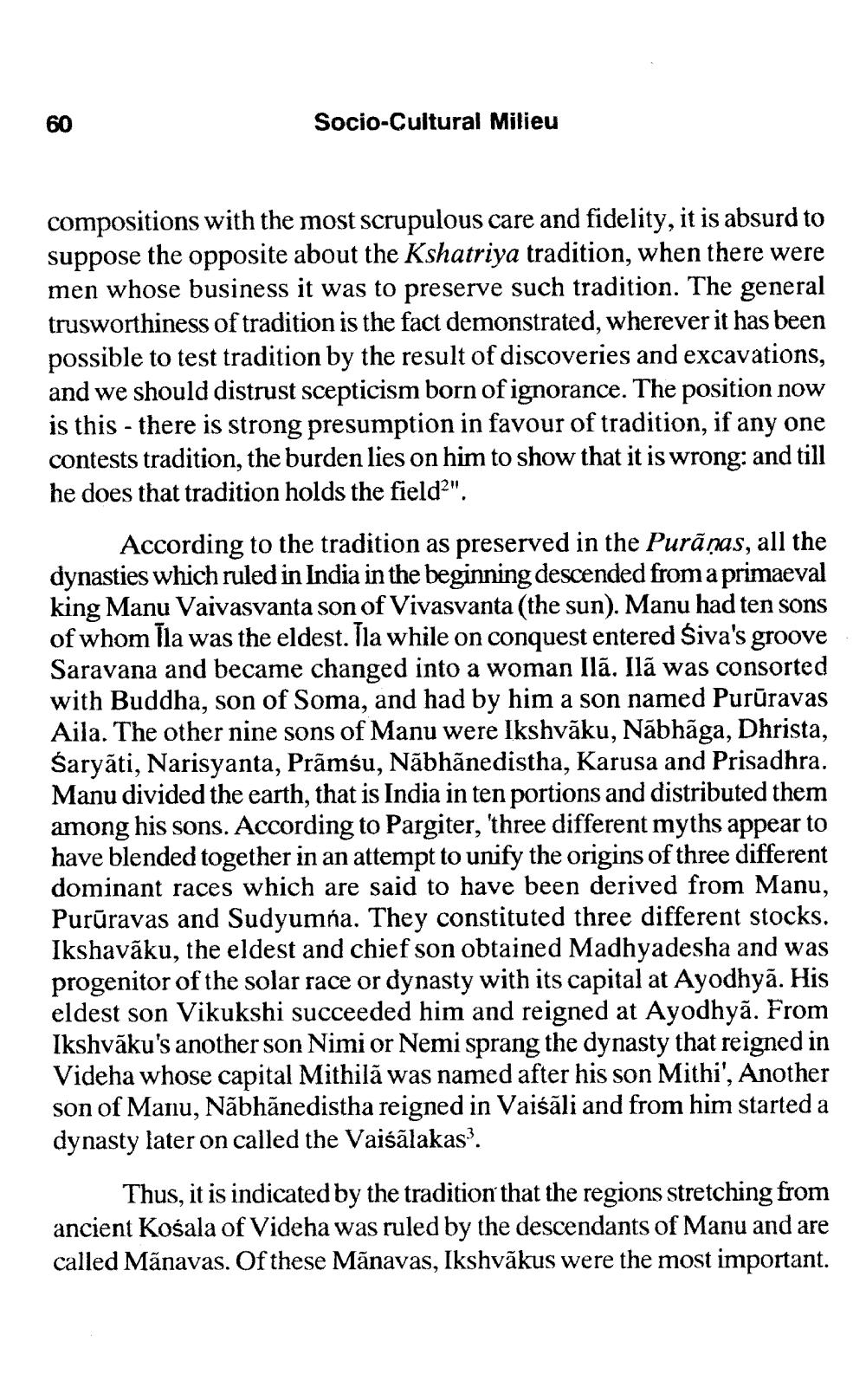________________
60
Socio-Cultural Milieu
compositions with the most scrupulous care and fidelity, it is absurd to suppose the opposite about the Kshatriya tradition, when there were men whose business it was to preserve such tradition. The general trusworthiness of tradition is the fact demonstrated, wherever it has been possible to test tradition by the result of discoveries and excavations, and we should distrust scepticism born of ignorance. The position now is this - there is strong presumption in favour of tradition, if any one contests tradition, the burden lies on him to show that it is wrong: and till he does that tradition holds the field?".
According to the tradition as preserved in the Purāņas, all the dynasties which ruled in India in the beginning descended from a primaeval king Manu Vaivasvanta son of Vivasvanta (the sun). Manu had ten sons of whom Ila was the eldest. Tla while on conquest entered Siva's groove Saravana and became changed into a woman Ilã. Ilã was consorted with Buddha, son of Soma, and had by him a son named Purūravas Aila. The other nine sons of Manu were Ikshvāku, Nābhāga, Dhrista, Śaryāti, Narisyanta, Prımśu, Nābhānedistha, Karusa and Prisadhra. Manu divided the earth, that is India in ten portions and distributed them among his sons. According to Pargiter, 'three different myths appear to have blended together in an attempt to unify the origins of three different dominant races which are said to have been derived from Manu, Purūravas and Sudyumna. They constituted three different stocks. Ikshavãku, the eldest and chief son obtained Madhyadesha and was progenitor of the solar race or dynasty with its capital at Ayodhyā. His eldest son Vikukshi succeeded him and reigned at Ayodhyā. From Ikshvāku's another son Nimi or Nemi sprang the dynasty that reigned in Videha whose capital Mithilã was named after his son Mithi', Another son of Manu, Nābhānedistha reigned in Vaiśāli and from him started a dynasty later on called the Vaiśālakas?.
Thus, it is indicated by the tradition that the regions stretching from ancient Košala of Videha was ruled by the descendants of Manu and are called Mänavas. Of these Mãnavas, Ikshvãkus were the most important.




